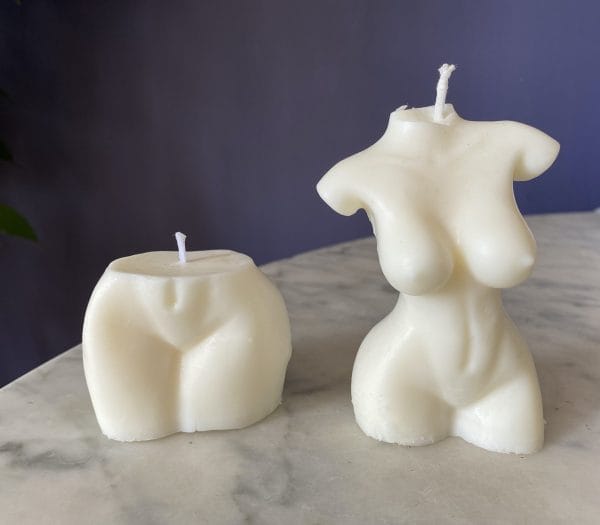Essential Oils for Candle Making: Crafting the Perfect Scent
Creating candles at home has become a beloved hobby and a thriving business for many crafters. The allure of candle making lies not only in the process itself but also in the ability to infuse a wide array of scents that enhance the ambiance of any space. Essential oils have become a popular choice for candle makers seeking to create natural, chemical-free fragrances.
In this article, we will explore the use of essential oils for candle making, helping you identify the best essential oils for your homemade candles, and how to blend them to create unique aromatic experiences.

Understanding Essential Oils in Candle Making
![]()
Essential oils are concentrated liquids containing volatile aroma compounds from plants. Unlike synthetic fragrances, essential oils are extracted through distillation or mechanical methods, such as cold pressing. When used in candle making, they provide a more natural scent that can offer aromatherapeutic benefits. However, not all essential oils are suitable for candle making. Factors like flashpoint, scent throw, and oil solubility must be considered to ensure a safe and pleasant-smelling candle.
What is the Best Essential Oil for Candle Making?
![]()
When it comes to determining the best essential oil for candles, it’s important to consider both the oil’s aromatic quality and its performance when burned. Some essential oils have a stronger scent that can fill a room, while others might be more subtle. Additionally, the best essential oil for your candles may also depend on personal preference and the type of ambiance you wish to create.
Strongest Essential Oils for Candles
Some essential oils naturally have a more potent scent and can be considered the strongest essential oils for candles. These oils are known for their robust throw, meaning the fragrance is noticeable even when the candle is not lit. Examples include:
- Eucalyptus
- Lavender
- Peppermint
- Rosemary
- Lemongrass
These essential oils are not only strong, but they also bring their own unique benefits, such as relaxation, mental clarity, or invigoration.
Essential Oil Combinations for Candles
![]()
Blending essential oils can create complex and layered scents that can enhance the candle’s appeal. When crafting essential oil combinations for candles, it’s important to understand the basics of scent notes:
- Top Notes: These are the first scents you perceive and tend to be light and fresh. Examples include citrus oils like lemon and bergamot.
- Middle Notes: Also known as heart notes, these make up the core of the fragrance. Floral oils like lavender and geranium are common middle notes.
- Base Notes: These scents linger the longest and are often deep and rich. Woodsy oils such as cedarwood and sandalwood serve as base notes.
By combining top, middle, and base notes, you can create a well-rounded scent profile for your candles. Here are a few examples of essential oil blends that work well in candles:
- Relaxing Blend: Lavender (middle) with a hint of peppermint (top) and cedarwood (base).
- Uplifting Blend: Grapefruit (top) paired with geranium (middle) and frankincense (base).
- Seasonal Blend: Orange (top), cinnamon (middle), and clove (base) for a warm, holiday-inspired scent.
Best Essential Oil Scents for Candles
![]()
The best essential oil scents for candles often reflect the mood or atmosphere you want to create. Here are some popular choices:
- Lavender: Known for its calming properties, lavender is a favorite for creating a soothing environment.
- Lemon: Lemon’s fresh and clean scent is perfect for energizing a room and improving focus.
- Vanilla: While not available as a natural essential oil, vanilla-like scents can be mimicked using blends of oils like benzoin resin.
- Rose: Ideal for creating a romantic or luxurious atmosphere, rose is a classic choice.
- Sandalwood: With its rich, woodsy aroma, sandalwood is great for grounding and centering.
When selecting essential oils, also consider their potential health benefits. For instance, eucalyptus may help with respiratory issues, while peppermint can invigorate the senses.
Practical Tips for Using Essential Oils in Candle Making
![]()
Using essential oils in candle making requires some know-how. Here are some tips to get you started:
- Use the Right Amount: Essential oils should be used sparingly in candle making. A good rule of thumb is to use about 30 to 50 drops of essential oil per pound of candle wax.
- Consider the Wax: Different waxes hold scents differently. Soy wax, for example, is known for its ability to retain essential oil scents well.
- Test Your Candles: Before making a large batch, test a small candle to ensure the scent throw is to your liking and the candle burns properly.
- Label Your Candles: When selling or gifting candles, always label them with the essential oils used, especially since some individuals may have allergies or sensitivities.
Conclusion: The Aromatic Art of Candle Making with Essential Oils
![]()
Candle making with essential oils offers a delightful way to bring natural fragrances into the home. Whether you’re looking for the strongest essential oils for candles or the best essential oil scents for creating a specific mood, there’s a vast array of options to explore. Remember to consider the scent throw, how the oils blend, and the amount you use to ensure a safe and enjoyable candle. With the right knowledge and creativity, the possibilities for crafting bespoke candles with essential oils are endless.
Take the time to experiment with different essential oil combinations for candles, and don’t be afraid to try new blends. Your unique creations will not only smell fantastic but also offer the added benefit of aromatherapy. As you become more experienced, you’ll discover what works best for you and your candle-making endeavors. Happy crafting!



